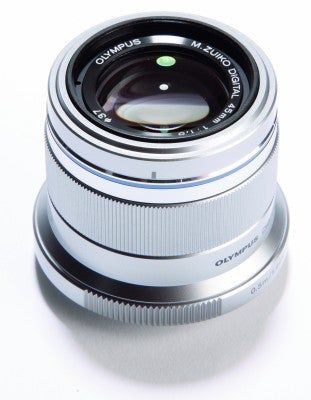The Olympus M.Zuiko Digital 45mm features a metal-like design and a beneficial maximum aperture
Olympus M.Zuiko Digital 45mm f/1.8 Review
The key question, however, is whether the MTF results are strong enough to encourage the use of maximum aperture. And the answer is a resounding yes because the Olympus 45mm portrait lens achieves the full maximum theoretical figure of 0.5 cycles-per-pixel at f/4 and f/5.6. Repeat testing confirmed that this was not a fluke. Given this achievement, 20/20 has been awarded for MTF performance even though the lens drops to 0.22 cycles-per-pixel (below the 0.25 cycles-per-pixel critical threshold) at f/22.
As is common for CCS lenses, the only control on the 45mm prime is a rotating ring that occupies the centre third of the lens barrel and provides manual focussing, which can be performed either viewing the entire image or at any magnification between 5x and 14x. It is also possible to use whole-area viewing even if Focus Assist (magnification) is selected provided that one of the various quick-set menus is active. In aperture-priority mode, for example, while the aperture-adjustment menu is live movement of the manual focussing ring doesn’t magnify the image: sometimes this can be a really useful short-cut to avoid losing sight of the entire frame.
A nice but purely cosmetic touch is the ability to choose the colour of the foremost part of the lens housing to match the colour of the host body. Equally cosmetic is what Olympus calls a metal-like exterior design. The previously-reviewed 12mm has a genuinely metal-bodied construction but the 45mm is merely matched for appearance. Similarly, there are no distance and depth-of-field markings on the 45mm lens.





